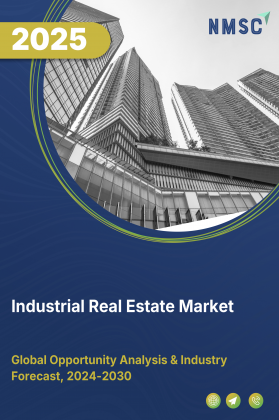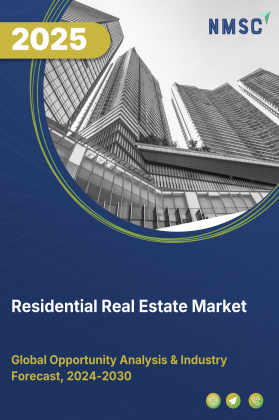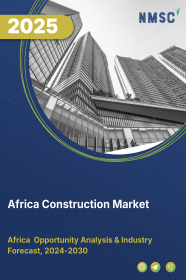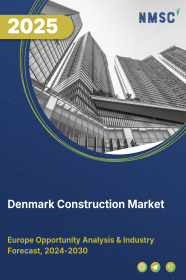
Denmark Construction Market by Type (Renovation, and New Construction), by Sector (Real Estate, Infrastructure, and Industrial), by Construction Method (Traditional, Prefabricated/Modular, 3D-Printed, and Green/Sustainable), by Contractor Type (Large Contractor, Medium Contractor, and Small Contractor) – Industry Trends and Forecast, 2025–2030
Industry: Construction & Manufacturing | Publish Date: 19-Aug-2025 | No of Pages: 154 | No. of Tables: 117 | No. of Figures: 62 | Format: PDF | Report Code : CM2202
Industry Overview
The Denmark Construction Market size was valued at USD 46.19 billion in 2024, and is predicted to reach USD 51.97 billion by the end of 2025. The industry is predicted to reach USD 65.86 billion by the end of 2030, at a CAGR of 4.8% from 2025 to 2030.
The market is undergoing dynamic transformation, fueled by strong government support and ambitious infrastructure initiatives. Strategic projects such as the construction of an artificial energy island and large-scale wind power integration reflect the country’s long-term sustainability goals, reinforcing its leadership in green development. The rise in underground construction, including major cross-border tunnels, highlights a commitment to sustainable mobility and enhanced connectivity.
However, the sector faces ongoing challenges from complex regulatory environments that slow progress and deter investment. At the same time, the increasing use of digital technologies, especially Building Information Modeling (BIM), is opening avenues for greater efficiency and innovation, signaling a shift toward a smarter and more resilient construction ecosystem.
Green Infrastructure Investments Accelerate Growth in the Denmark Construction Market
Denmark’s ambitious climate agenda is fueling a wave of green infrastructure projects that are reshaping the national construction market. Significant public and private capital is being directed toward climate-resilient urban design, low-carbon buildings, sustainable mobility infrastructure, and renewable energy facilities. Notable initiatives include the expansion of offshore wind capacity, smart energy grids, and climate-adaptive urban landscapes like cloudburst roads and flood-resilient drainage systems. These projects align with the EU Green Deal and Denmark’s own target of becoming carbon-neutral by 2045, creating sustained demand for specialized construction capabilities and environmentally certified materials.
In addition, the integration of climate adaptation into municipal planning mandates is stimulating construction activity in both coastal and inland cities. As a result, demand is rising for climate-focused design-build firms, ESG-compliant contractors, and green-certified product suppliers—firmly positioning sustainability as a key growth lever in the market.
Data Center Expansion Boosts Demand for Industrial Construction
Denmark has emerged as a leading Nordic hub for hyperscale data centers due to its stable climate, reliable energy grid, and strong data privacy regulations. Global tech giants such as Apple, Meta, and Google have ramped up investments in Denmark, building energy-efficient data centers powered by renewable sources. This surge in digital infrastructure investment is propelling industrial construction activity, especially in regions like Foulum, Taulov, and Køge.
These developments are generating secondary demand for roads, energy infrastructure, and logistics facilities, thereby amplifying the broader impact on the construction value chain. Additionally, partnerships between municipalities and private investors are accelerating planning approvals and site development. With digital transformation and AI adoption driving data consumption, the growth of this sector is expected to remain a strong pillar for industrial and commercial construction across Denmark.
Acute Skilled Labour Shortages Constrain Project Delivery
The Denmark construction market is facing critical workforce constraints, particularly in skilled trades such as electricians, plumbers, machine operators, and project managers. Despite rising demand for infrastructure and green building projects, the local labor pool is not growing at a pace sufficient to meet sectoral needs. Factors such as demographic aging, a slow pipeline of vocational graduates, and post-pandemic labor mobility issues have deepened the shortage.
This talent gap has led to project delays, cost overruns, and increased reliance on foreign labor—raising concerns around compliance and long-term workforce sustainability. Efforts by the government to reform vocational training, provide immigration pathways, and improve working conditions are ongoing, but until the skills gap is addressed at scale, it will continue to hamper market efficiency and limit growth potential.
Prefabrication and Modular Construction Unlock New Efficiencies in Project Execution
As Denmark pushes for faster and more sustainable construction outcomes, the market is witnessing growing adoption of prefabricated and modular construction techniques. These methods allow for off-site manufacturing of building components under controlled conditions, leading to reduced waste, improved quality control, and shorter on-site assembly timelines. This is particularly beneficial for housing, healthcare, and educational infrastructure, where speed and cost-efficiency are critical.
Recent pilot projects led by regional housing authorities and private developers in cities like Aarhus and Odense have demonstrated the scalability of these methods. Combined with digital tools like BIM and automated assembly technologies, prefabrication is increasingly being integrated into mainstream project delivery. As policy incentives and market demand converge, modular construction presents a scalable opportunity to meet Denmark’s housing and infrastructure goals efficiently.
Competitive Landscape
The market players operating in the Denmark construction industry include Vinci SA, Skanska AB, NCC AB, Per Aarsleff Holding A/S, MT Højgaard Danmark A/S, Veidekke ASA, Ramboll Group A/S, Colas SA, Peab AB, Arkil Holding A/S, HPH Totalbyg A/S, Zublin A/S (Strabag SE), CG Jensen A/S, E. Pihl & Søn A/S, Leonhard Weiss A/S, and others.
Denmark Construction Market Key Segments
By Type
-
Renovation
-
New Construction
By Sector
-
Real Estate
-
Residential
-
Affordable
-
Luxury
-
-
Commercial
-
Retail Buildings
-
Office Buildings
-
Hospitality
-
Healthcare Facilities
-
Educational Institutes
-
Entertainment Ventures
-
-
-
Infrastructure
-
Transportation
-
Airport
-
Port
-
Rail
-
Road
-
-
Water and Wastewater
-
Energy
-
Telecommunication
-
-
Industrial
-
Manufacturing Plant
-
Warehouses
-
Power Plants
-
Oil Refineries
-
Chemical Plants
-
By Construction Method
-
Traditional Construction
-
Prefabricated/Modular Construction
-
3D-Printed Construction
-
Green/Sustainable Construction
By Type of Contractor
-
Large Contractor
-
Medium Contractor
-
Small Contractor
Key Players
-
Vinci SA
-
Skanska AB
-
NCC AB
-
Per Aarsleff Holding A/S
-
MT Højgaard Danmark A/S
-
Veidekke ASA
-
Ramboll Group A/S
-
Colas SA
-
Peab AB
-
Arkil Holding A/S
-
HPH Totalbyg A/S
-
Zublin A/S (Strabag SE)
-
CG Jensen A/S
-
E. Pihl & Søn A/S
-
Leonhard Weiss A/S
REPORT SCOPE AND SEGMENTATION:
|
Parameters |
Details |
|
Market Size in 2024 |
USD 46.19 Billion |
|
Revenue Forecast in 2030 |
USD 65.86 Billion |
|
Growth Rate |
CAGR of 4.8% from 2025 to 2030 |
|
Analysis Period |
2024–2030 |
|
Base Year Considered |
2024 |
|
Forecast Period |
2025–2030 |
|
Market Size Estimation |
Billion (USD) |
|
Growth Factors |
|
|
Companies Profiled |
15 |
|
Market Share |
Available for 10 companies |
|
Customization Scope |
Free customization (equivalent up to 80 working hours of analysts) after purchase. Addition or alteration to country, regional, and segment scope. |
|
Pricing and Purchase Options |
Avail customized purchase options to meet your exact research needs. |

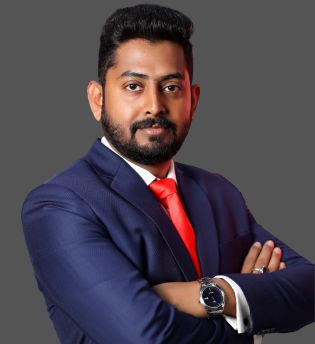















 Speak to Our Analyst
Speak to Our Analyst



